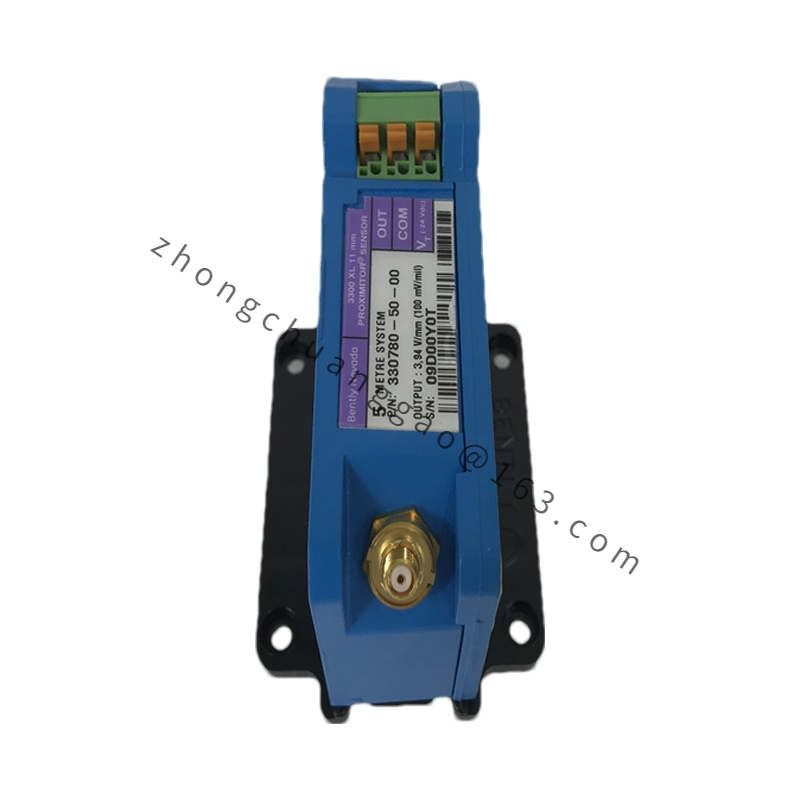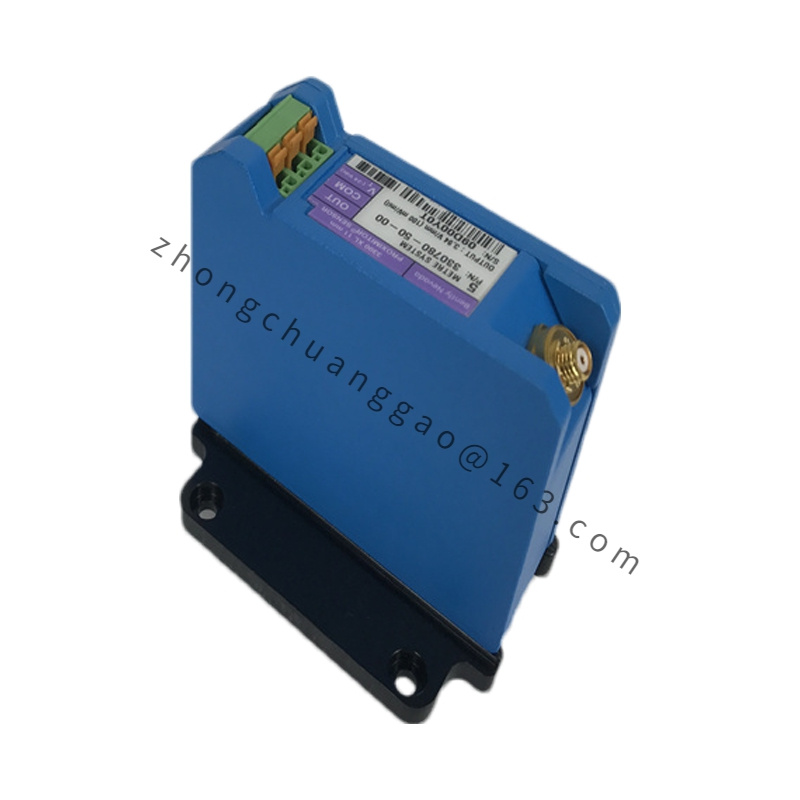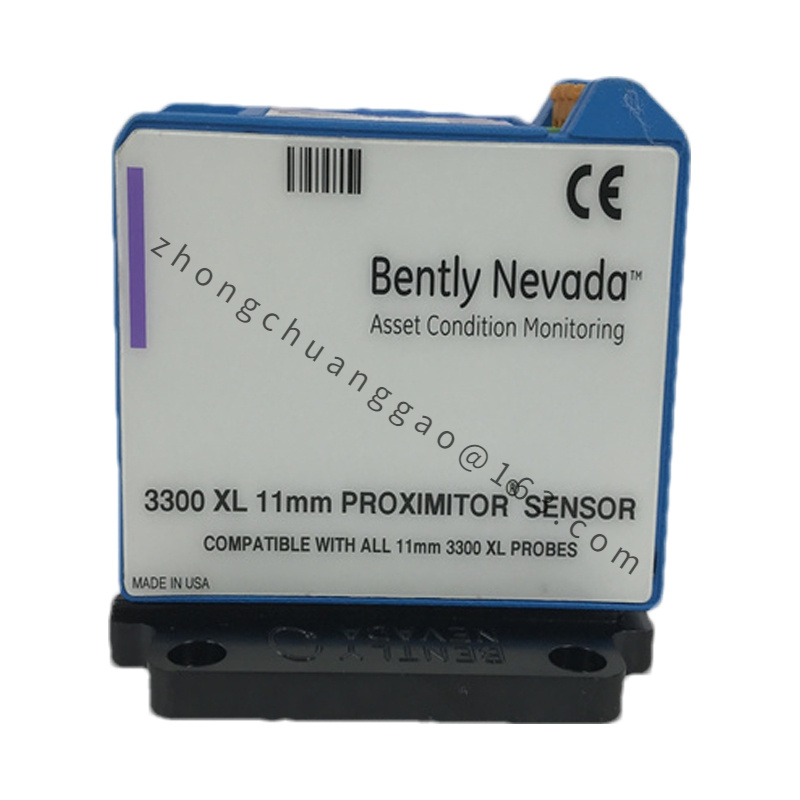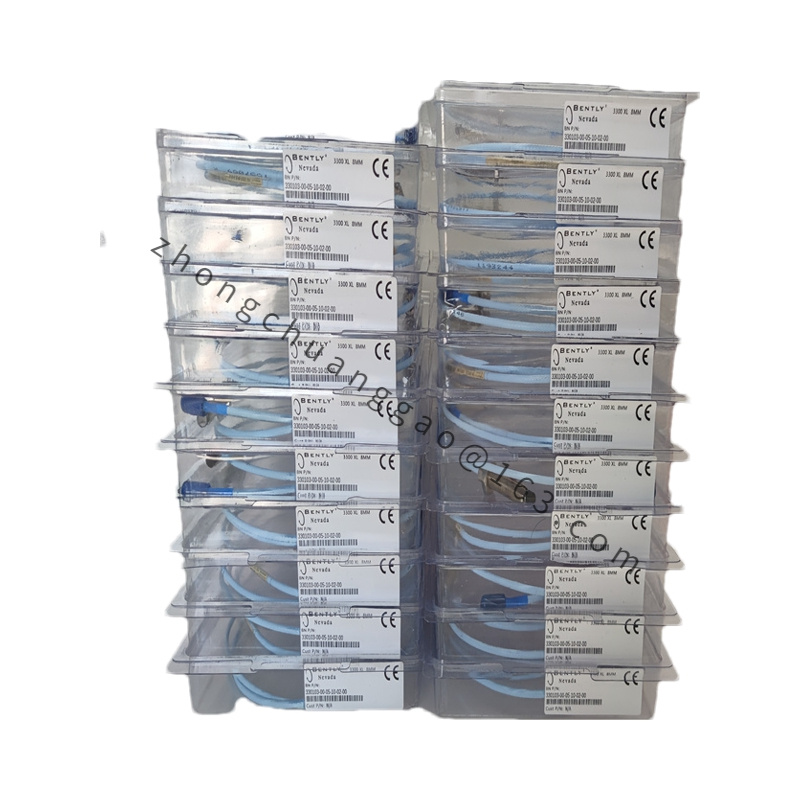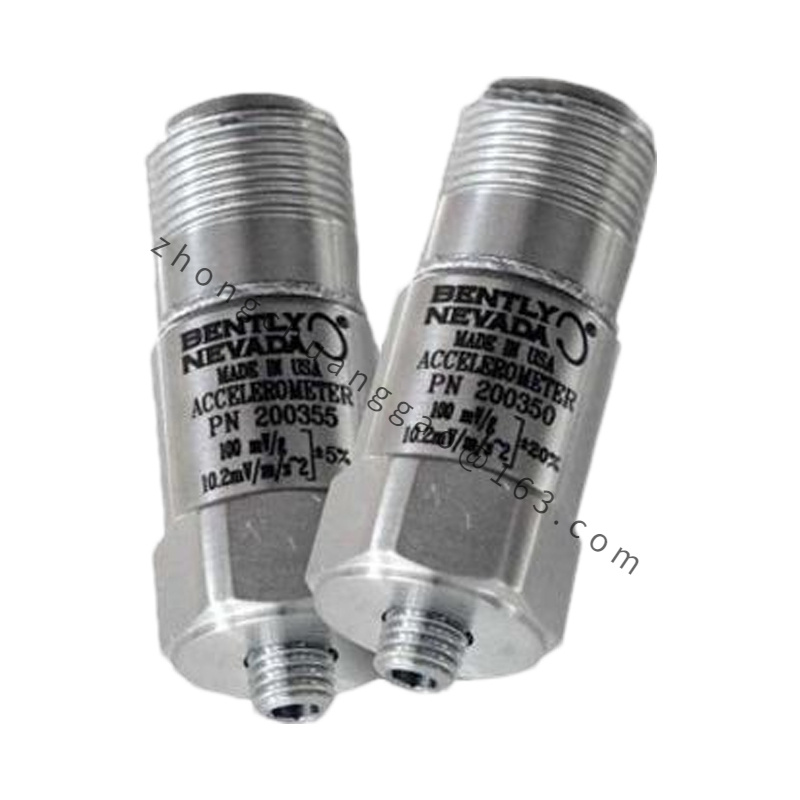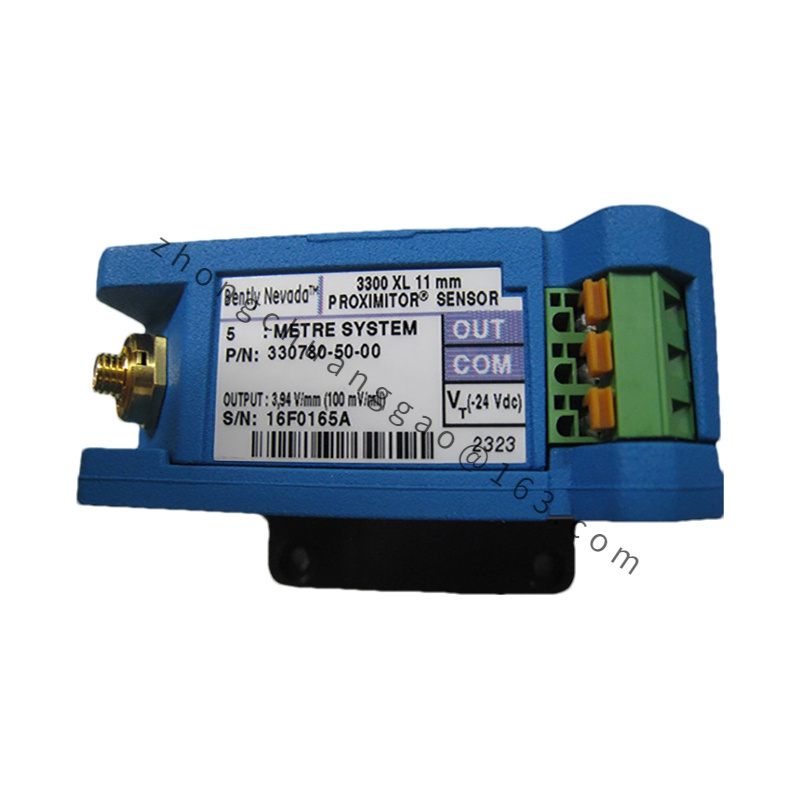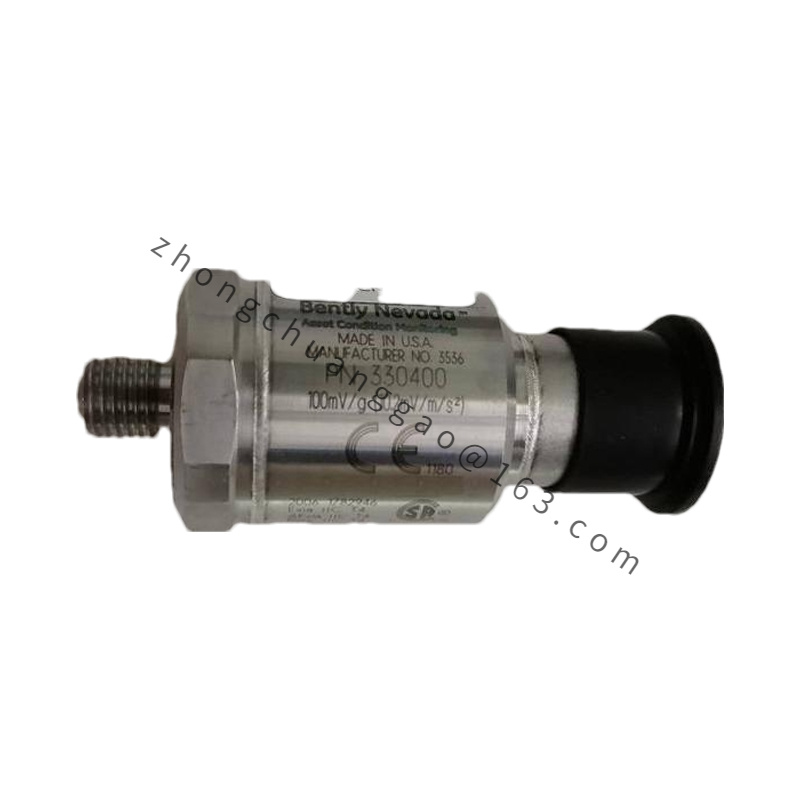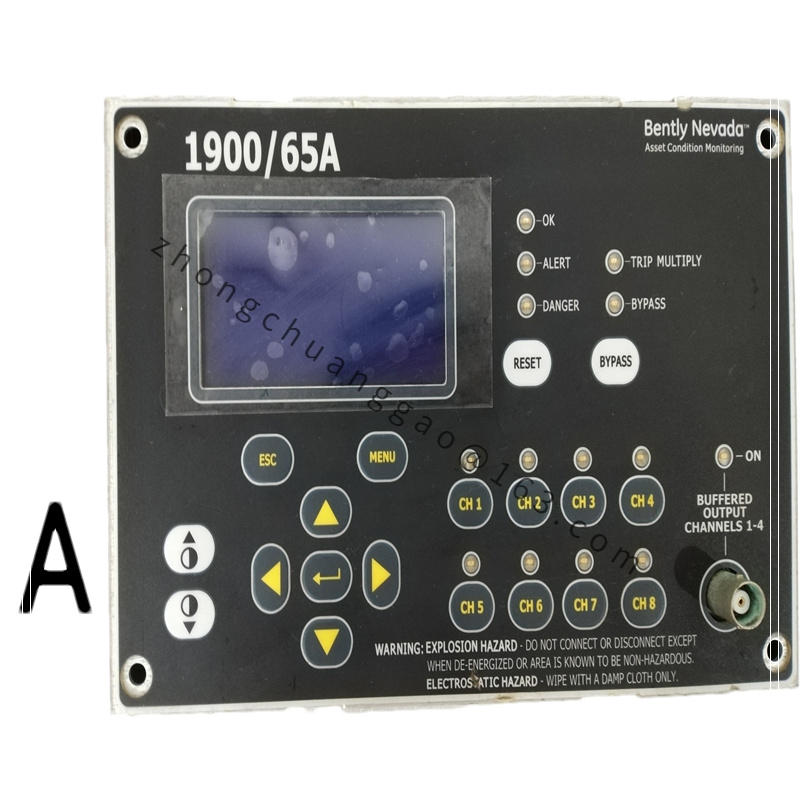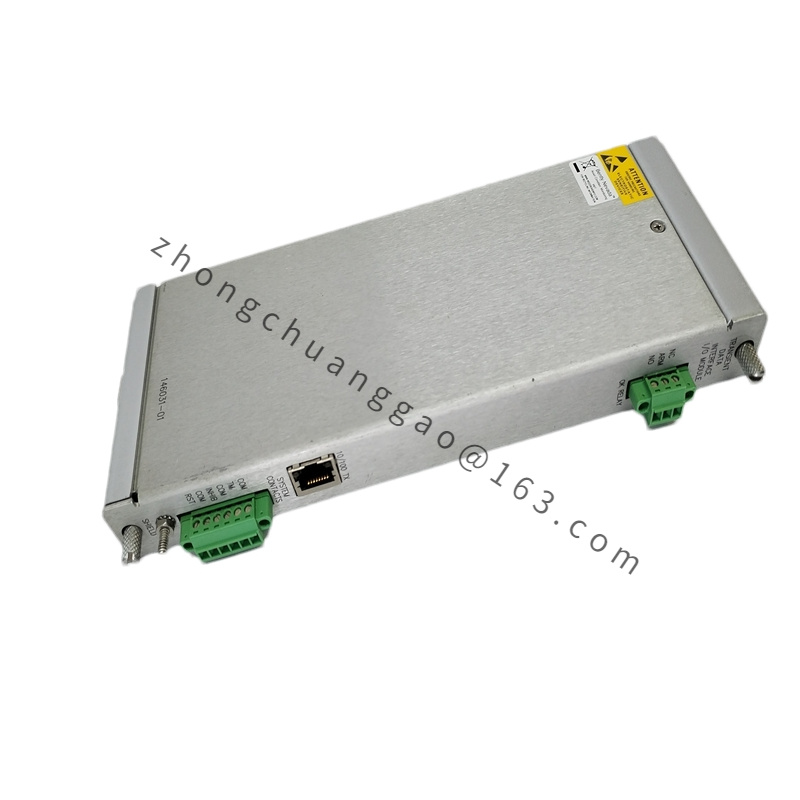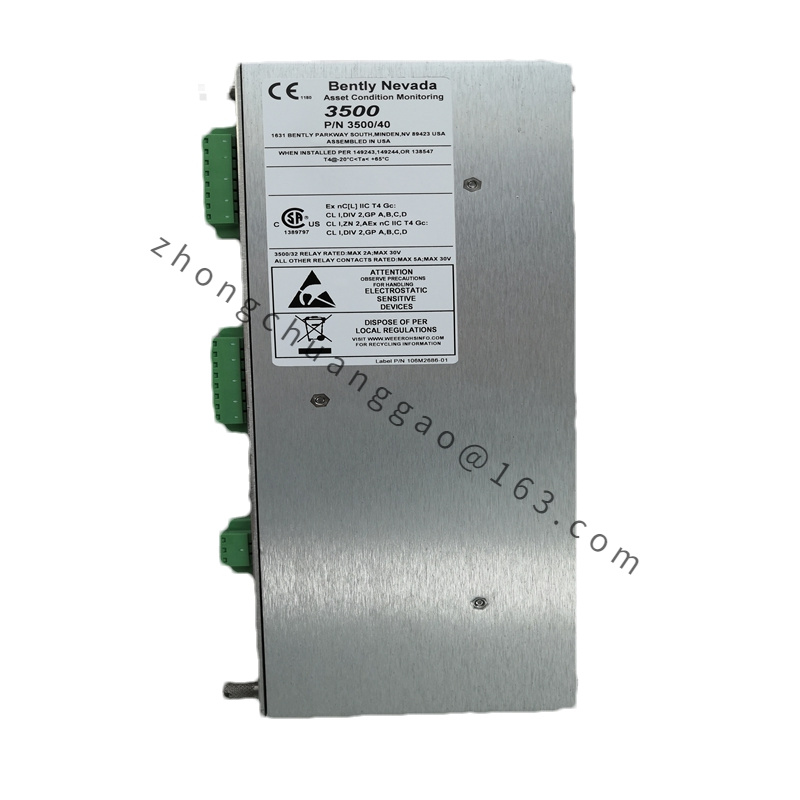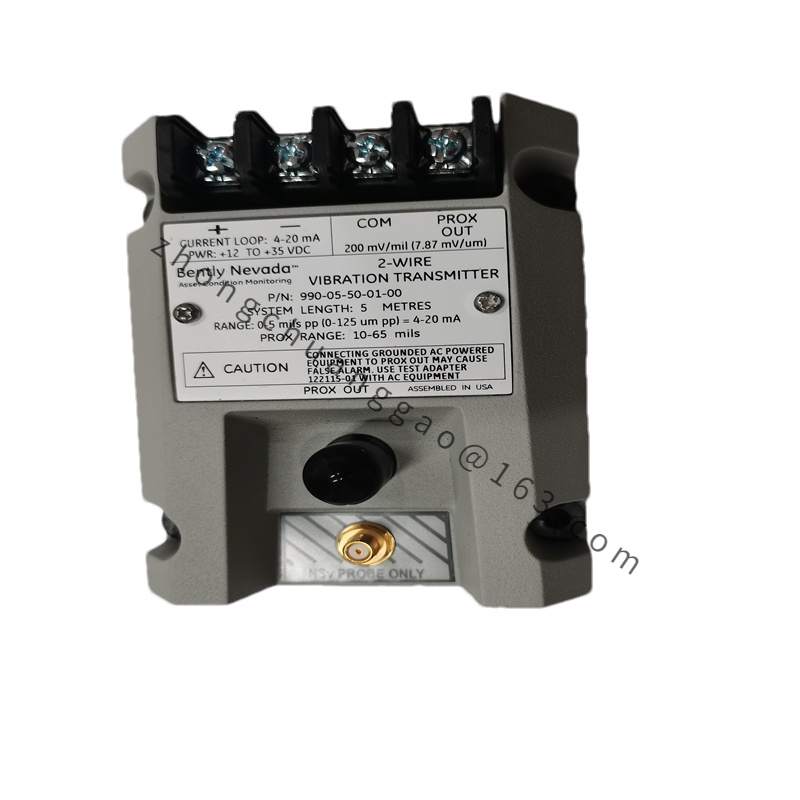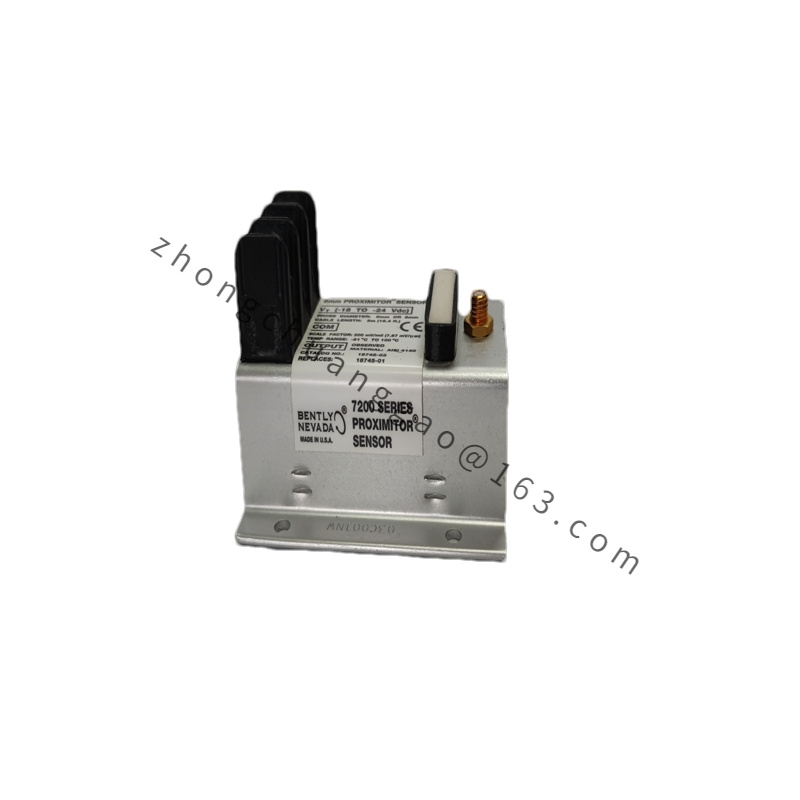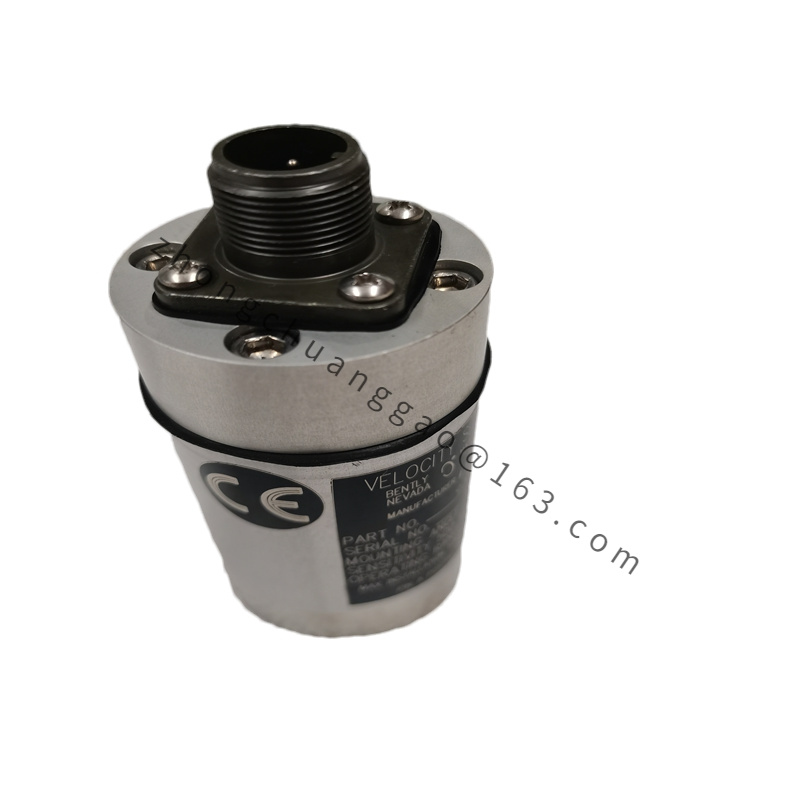Detailed content
Technical Specifications
- Model: Bently 330780-50-00
- Type: Vibration Sensor (Accelerometer)
- Measurement Range: This sensor measures vibration acceleration. The specific measurement range is detailed in the product datasheet and generally covers a broad spectrum suitable for various industrial applications.
- Output Signal: Provides an analog output, typically a 4-20 mA current loop signal. This is a standard output for industrial vibration monitoring systems.
- Sensitivity: Sensitivity is usually expressed in mV/g (millivolts per gravitational acceleration). The precise sensitivity value should be confirmed from the datasheet.
- Frequency Response: Designed to measure a wide frequency range, covering both low and high frequencies. Specific frequency response characteristics are detailed in the datasheet.
- Operating Temperature Range: Operates effectively in a temperature range of -40°C to +85°C (-40°F to +185°F), ensuring reliable performance in various environmental conditions.
- Protection Rating: Generally features a high protection rating, such as IP67, which means it is resistant to dust ingress and can withstand temporary immersion in water.
Features
- High Accuracy: Delivers precise vibration measurements essential for detecting small changes and identifying potential issues in machinery.
- Durable Design: Built to withstand harsh industrial environments, providing long-term reliability and performance.
- Stable Performance: Known for its stable and consistent operation over time, which is crucial for accurate monitoring and analysis.
- Easy Integration: Compatible with a variety of vibration monitoring systems, making it easy to integrate into existing setups.
Application Scenarios
- Machinery Condition Monitoring: Ideal for monitoring the health of rotating equipment such as motors, pumps, compressors, and turbines. The sensor helps in the early detection of mechanical issues through detailed vibration analysis.
- Predictive Maintenance: Supports predictive maintenance strategies by providing detailed vibration data to predict potential equipment failures before they occur, helping to reduce downtime and maintenance costs.
- Industrial Automation: Used in automated systems to ensure continuous monitoring of machinery, which helps maintain smooth operation and prevents production disruptions.
- Power Generation and Oil & Gas: Applied in critical sectors such as power generation and oil & gas to monitor essential equipment, preventing unexpected failures and maintaining operational efficiency and safety.
Usage Considerations
- Installation: Proper installation is essential to ensure accurate vibration measurements. Ensure the sensor is mounted correctly in an optimal position to measure relevant vibrations effectively.
- Calibration: Regular calibration is necessary to maintain the sensor’s accuracy and performance over time.
- Maintenance: Routine inspection and maintenance are important to ensure the sensor remains functional and to address any potential issues.

